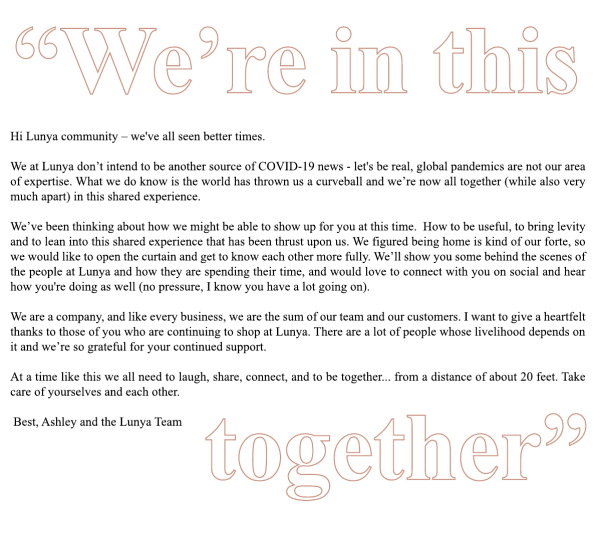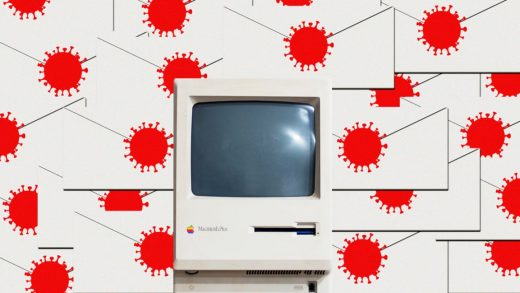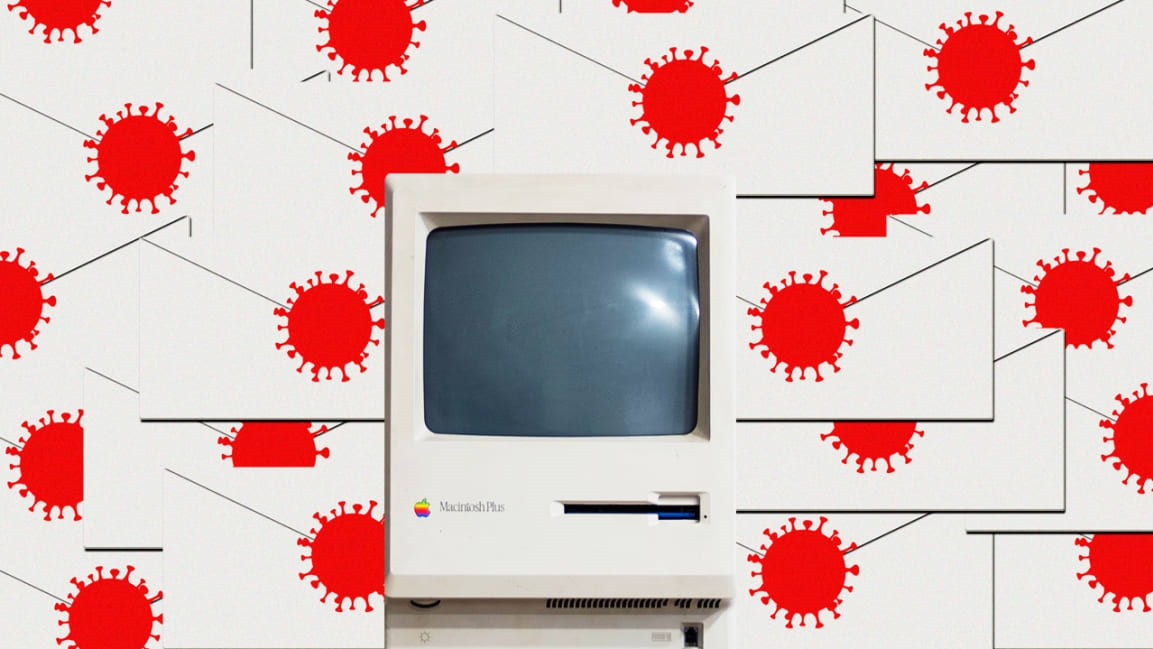Why every brand you’ve ever bought something from is sending you coronavirus emails
Americans are still only in the first week of expanded response to the coronavirus crisis: the social distancing, the working from home, the toilet paper memes.
As our everyday routines became disrupted, so, too, were the wheels of commerce, resulting in unprecedented closures, layoffs—and a tidal wave of automated emails from every single company you’ve ever bought anything from in the history of your life.
The three tiers of brand coronavirus emails
There seems to be three tiers of brand emails at this point. First, the service message. This is the most important and helpful, the ones that inform us about a change in service, an updated policy, or a relevant discount. It’s the Gap telling you about store closures. It’s Geico suggesting its insurance customers use its app while assuring them the company is committed to “being responsive and flexible to our customers’ needs.” It’s airlines keeping you posted on travel restrictions and flight updates.
And, um, it’s KFC letting you know you can still get your chicken buckets, but now with tamper-evident seals and contact-free Grubhub delivery. (Hey, it still counts.)

Tier Two is the Brand Friend. This is where brands who have built a direct line of communication with customers feel obligated to at least acknowledge the situation, even if it’s just to say hi with a “We’re all in this together” drum-circle vibe. Women’s sleepwear brand Lunya, for example, simply thanked customers for their business and added, “At a time like this we all need to laugh, share, connect, and be together . . . from a distance of about 20 feet. Take care of yourselves and each other.”
The third tier is the seemingly completely random, we-just-happened-to-have-your-email-thanks-for-buying-our-cat-food-three-years-ago message.
Of all these branded emails, Tier Three emails are the ones that belong in inbox hell.
I swear to god if I get another “We are here for you” email from some shitty brand email list I got opted into because I bought a thing one time 3 years ago ????
— Leon Lush (@LeonLush) March 17, 2020
How brands can avoid infuriating their customers right now
According to brand and PR pros, that third tier shouldn’t exist and companies need to be clear and deliberate in their communication strategy.
“Companies have an obligation to employees and customers to communicate the steps they’re taking to protect their health and well-being,” says Weber Shandwick president and CEO Gail Heimann. “That means leaders are providing information and reassurance in real time as they make massive shifts in how they do business. And that, in many cases, means sending emails. We’re counseling clients to communicate when there are new developments—whether that means explaining proactive measures to prevent COVID-19 related issues or updating customers about ways to access their services virtually.”
Ted Nelson, CEO and cofounder of agency Mechanica, says that while brands are likely freezing their media expenditures to save money at a time of reduced sales—as well as to avoid appearing like ambulance-chasing opportunists—marketers just can’t help themselves in their always-on quest to keep in touch with customers. “Which is why we’re all of a sudden being deluged in low-cost, frequently poorly written emails from brands and organizations we haven’t heard from in ages,” says Nelson. “The problem is that everyone is switching into full-on tactical mode and aren’t thinking strategically or holistically across touch points. Their brand teams are siloed from their social teams, which are siloed from their demand-generation teams. As a result, the overall interaction as a customer feels discordant.”
me:
every brand, company, organization i’ve ever shared my email address with: ???????????? ???????????????????????????????????? ???????????????????????????????????? ???????????? ????????????????????????????????????????????
— steve (@sschreiber13) March 13, 2020
Now that the first wave of branded COVID-19 response emails has (hopefully) crested, marketers should be learning from all the eye-rolling.
Ryan Ku, head of strategy and brand innovation at San Francisco-based agency Eleven, says brands scrambling to communicate something, anything, relating to their business and the epidemic has unintentionally left the rest of us with a lot of unwelcome noise. “This is an instructive moment for brands as they consider their go-forward posture on marketing, messaging, and customer engagement,” says Ku. “The takeaway for brands is to be helpful, relevant, informative, constructively distracting, or authentically compassionate.”
This isn’t a local problem. T Brand’s executive strategy director Jane Kendall says that everyone—employees, customers, shareholders, and society—is experiencing it all at the same time. “No brand stands outside of it,” says Kendall. “But even while most brands are responding now, this is a crisis that may extend for months or more. Brands should really be considering when and how, in the lifecycle of the pandemic, they can make a meaningful contribution. Is it now during this initial response, or the recovery or mitigation to come?”
As it appears the assault on our collective inbox is far from over, perhaps the most important and informative lesson here may be the most obvious:
one lesson I’m learning from this pandemic is that way too many brands have my email
— maura quint (@behindyourback) March 13, 2020
(12)



